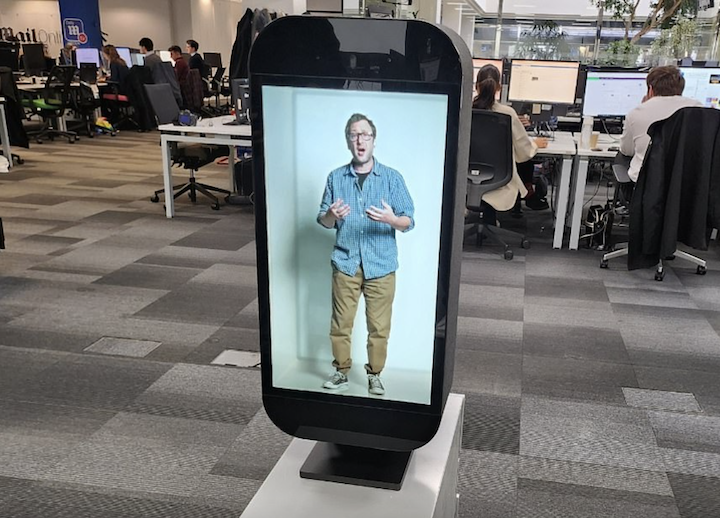Imagine sitting in your living room and watching a life-size 3D hologram of your favorite actor in your favorite movie right there in front of you. That dream could soon be a reality, thanks to a startup named Proto. This innovative company promises to bring 3D holograms directly into our homes, making what once seemed like a sci-fi fantasy into something much more tangible. Proto’s technology doesn’t just aim for small projections – it’s aiming to deliver life-size, fully interactive holograms right in your living space, revolutionizing how we consume entertainment.
For decades, companies have teased us with the promise of holograms making their way into our homes. We’ve seen holograms in movies, talked about the potential of immersive 3D experiences, but the technology always seemed to be “just around the corner.” Over the years, despite advancements in virtual reality, augmented reality, and other immersive tech, true home holograms have never quite come to fruition.
The major stumbling block has always been the complexity and cost of creating believable, real-time holographic images. Early attempts at holography required expensive and complex equipment, often relegating the tech to concerts, museums, or research facilities. But now, Proto is poised to change the game. The company has developed a sleek holographic projection system that could sit in your home and beam stunningly realistic 3D images into your living room.
One of the most iconic uses of hologram technology to date was the resurrection of rapper Tupac Shakur at Coachella in 2012. During Dr. Dre and Snoop Dogg’s performance, audiences were stunned as a hologram of Tupac took the stage and performed “Hail Mary.” The hologram, created by a company called Digital Domain, was so realistic that it reignited conversations about the future of entertainment, concerts, and even how deceased artists could “perform” for live audiences in the future. There were also a fair number of conspiracy theorists who insisted it was the real Tupac Shakur who they claimed faked his own death and had come back to perform at Coachella. No seriously. Talk about wackjobs!
The Tupac hologram was a monumental achievement at the time. However, the complexity and costs involved in creating such a detailed holographic representation were astronomical, and the technology seemed like it would be limited to big-budget events. But that performance laid the groundwork for companies like Proto to continue pushing the boundaries of what holograms could achieve.
Now, more than a decade after the Tupac hologram wowed audiences, we’re closer than ever to having similar holographic experiences in our homes. Proto has managed to package holographic technology into a user-friendly, consumer-sized box that can project life-size images right into your living room. Major brands like H&M and DHL have also used the platform for innovative marketing.
What’s exciting about Proto’s system is its versatility. It’s not just for watching concerts or movies. Imagine using it for fitness classes, telemedicine, shopping, or even video calls with family members who appear as if they’re right there in front of you. Proto’s holographic platform has the potential to be much more than a novelty—it could become an integral part of how we live and communicate.
The anticipation around Proto’s technology brings up the exciting possibility of holographic movies. Imagine watching a classic like “Star Wars” with the characters appearing in full 3D right in your living room, or being immersed in a new sci-fi film where the action literally unfolds around you. The tech has the potential to transform the way we experience entertainment, making it more interactive and immersive than ever before.
As technology improves, Proto’s holographic platform could become as common as our TVs or sound systems, offering a new dimension to how we engage with media. And while the road to widespread adoption might still have some bumps, it’s clear that Proto is leading the charge in making holograms a part of our everyday lives. The future of 3D holograms in our homes is no longer a distant dream—it’s a rapidly approaching reality.
Hologram boxes can beam ‘3D’ video into your living room

